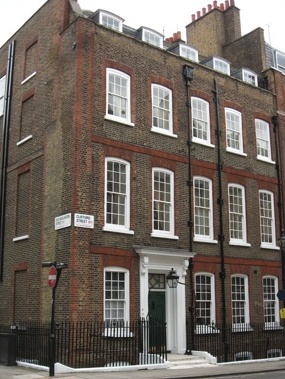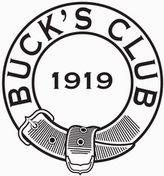Buck's Club
Buck's Club[edit | edit source]
Buck's Club is a private gentlemen's club located in London, England. Founded in 1919 by Herbert Buckmaster, the club is renowned for its exclusivity and its association with the creation of the Buck's Fizz cocktail. Situated in the heart of Mayfair, Buck's Club has maintained its reputation as a bastion of traditional British club culture.
History[edit | edit source]
Buck's Club was established shortly after the end of World War I, during a period when many new clubs were being founded in London. Herbert Buckmaster, an actor and socialite, envisioned a club that would cater to a younger generation of gentlemen who were returning from the war. The club quickly gained popularity among the British upper class and became known for its relaxed atmosphere compared to other more formal clubs of the time.
Clubhouse[edit | edit source]
The clubhouse of Buck's Club is located on Clifford Street in Mayfair. The building itself is a fine example of early 20th-century architecture, featuring elegant interiors that reflect the club's heritage. The clubhouse offers various amenities to its members, including a dining room, bar, and private meeting rooms.
Buck's Fizz[edit | edit source]
One of the most famous contributions of Buck's Club to popular culture is the invention of the Buck's Fizz cocktail. The drink, a mixture of champagne and orange juice, was created in 1921 by the club's bartender, Malachy McGarry. It was originally intended as a refreshing morning drink and has since become a staple at celebrations and brunches worldwide.
Membership[edit | edit source]
Membership at Buck's Club is highly exclusive, with a rigorous selection process. Prospective members must be nominated by existing members and undergo a thorough vetting process. The club maintains a strict dress code and upholds traditional values, making it a sought-after institution among London's elite.
Cultural References[edit | edit source]
Buck's Club has been referenced in various works of literature and media. It is famously mentioned in P.G. Wodehouse's Jeeves and Wooster stories, where it is depicted as a favorite haunt of the protagonist, Bertie Wooster. The club's atmosphere and traditions have inspired many fictional representations of London club life.
Related Pages[edit | edit source]
Search WikiMD
Ad.Tired of being Overweight? Try W8MD's NYC physician weight loss.
Semaglutide (Ozempic / Wegovy and Tirzepatide (Mounjaro / Zepbound) available. Call 718 946 5500.
Advertise on WikiMD
|
WikiMD's Wellness Encyclopedia |
| Let Food Be Thy Medicine Medicine Thy Food - Hippocrates |
Translate this page: - East Asian
中文,
日本,
한국어,
South Asian
हिन्दी,
தமிழ்,
తెలుగు,
Urdu,
ಕನ್ನಡ,
Southeast Asian
Indonesian,
Vietnamese,
Thai,
မြန်မာဘာသာ,
বাংলা
European
español,
Deutsch,
français,
Greek,
português do Brasil,
polski,
română,
русский,
Nederlands,
norsk,
svenska,
suomi,
Italian
Middle Eastern & African
عربى,
Turkish,
Persian,
Hebrew,
Afrikaans,
isiZulu,
Kiswahili,
Other
Bulgarian,
Hungarian,
Czech,
Swedish,
മലയാളം,
मराठी,
ਪੰਜਾਬੀ,
ગુજરાતી,
Portuguese,
Ukrainian
Medical Disclaimer: WikiMD is not a substitute for professional medical advice. The information on WikiMD is provided as an information resource only, may be incorrect, outdated or misleading, and is not to be used or relied on for any diagnostic or treatment purposes. Please consult your health care provider before making any healthcare decisions or for guidance about a specific medical condition. WikiMD expressly disclaims responsibility, and shall have no liability, for any damages, loss, injury, or liability whatsoever suffered as a result of your reliance on the information contained in this site. By visiting this site you agree to the foregoing terms and conditions, which may from time to time be changed or supplemented by WikiMD. If you do not agree to the foregoing terms and conditions, you should not enter or use this site. See full disclaimer.
Credits:Most images are courtesy of Wikimedia commons, and templates, categories Wikipedia, licensed under CC BY SA or similar.
Contributors: Prab R. Tumpati, MD


